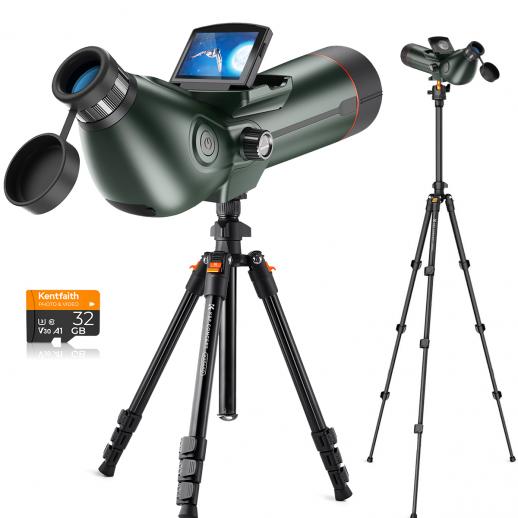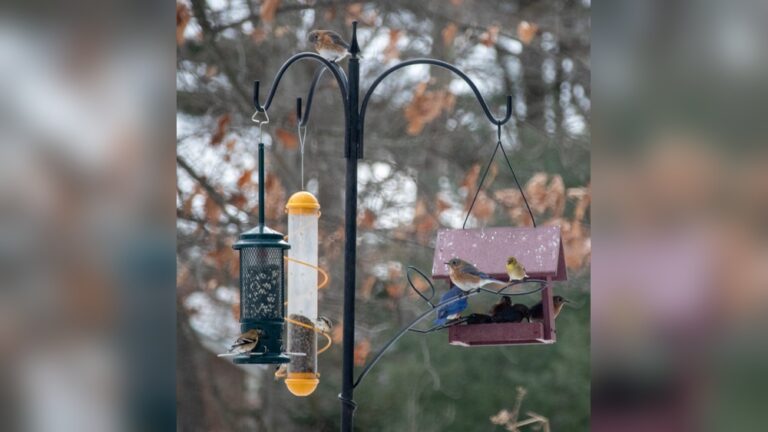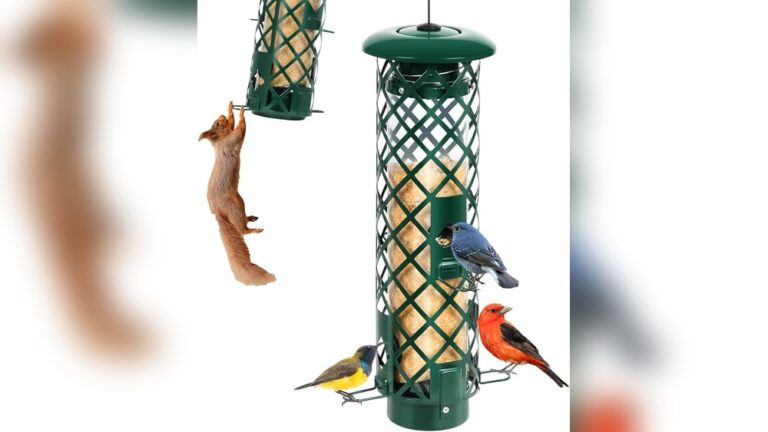Using Monocular Telescope For Your Bird Watching
If you love bird watching, you know how important it is to get a clear, close-up view of those beautiful creatures. Using a monocular telescope can change the way you see birds forever.
Imagine spotting tiny details on a feather or watching a bird’s behavior without disturbing it. This simple tool can make your bird watching trips more exciting and rewarding. You’ll discover how a monocular telescope can boost your experience and why it might be the perfect companion for your next outdoor adventure.
Keep reading to find out how to choose the right one and get the most out of it.

Credit: www.kufripacificresort.com
Choosing The Right Monocular
Choosing the right monocular is key for a great bird watching experience. The right tool helps you see birds clearly without strain or hassle. Many factors matter when picking a monocular. Focus on these to find one that fits your needs and style.
Magnification And Lens Size
Magnification shows how close the bird appears. A 6x to 10x magnification works well for most bird watchers. Higher magnification can make images shaky and hard to hold. Lens size affects brightness and clarity. Larger lenses let in more light, giving brighter images. Aim for a lens size between 20mm and 42mm for a good balance.
Weight And Portability
Lightweight monoculars are easier to carry on long walks. Heavy models tire your hand quickly and slow you down. Compact sizes fit easily in pockets or small bags. Portability matters if you like hiking or traveling to watch birds. Choose a monocular that feels comfortable and easy to handle.
Durability And Weather Resistance
Bird watching often happens outdoors in different weather. A durable monocular lasts longer and handles rough use. Look for waterproof or fog-proof models. These protect the lenses from rain and mist. Rubber armor offers a good grip and extra shock protection. Weather resistance keeps your gear safe and ready.
Setting Up Your Monocular
Setting up your monocular is the first step to enjoy clear and close views of birds. A good setup helps you see sharp images without strain. Follow simple steps to prepare your monocular for bird watching. Proper setup improves your experience and makes spotting birds easier.
Adjusting The Focus
Hold the monocular steady at eye level. Turn the focus ring slowly until the bird appears sharp. Small movements help find the clearest image. Avoid quick or large turns that blur the view. Practice focusing on different distances for better control.
Using Eye Relief Properly
Eye relief is the distance between your eye and the lens. Keep your eye at the right distance for a full, clear view. Too close or too far causes dark edges or blurred images. Adjust your position to match the eye relief length. This reduces eye strain during long bird-watching sessions.
Attaching To Tripods
Using a tripod stabilizes your monocular for steady viewing. Attach the monocular firmly to the tripod mount. Check that it locks securely and does not wobble. A tripod is helpful for long observations or zoomed-in views. It keeps your hands free and reduces shaking for sharp images.
Techniques For Bird Watching
Bird watching is a fun and peaceful hobby. Using a monocular telescope can make it even better. It helps you see birds clearly, even from far away. This section shares easy techniques to improve your bird watching skills with a monocular. These tips help you spot, track, and view birds in different lighting.
Spotting Birds At A Distance
Hold your monocular steady and bring it to your eye slowly. Scan the area calmly to find birds without startling them. Look for movement or shapes that stand out against the background. Use small, slow movements to keep your view smooth. Practice helps your eyes adjust to spotting birds far away.
Tracking Moving Birds
Start by focusing on the bird before it moves. Keep your hand steady and follow the bird gently with the monocular. Move your body, not just your arm, for smoother tracking. Try to predict the bird’s path. This helps you stay focused and enjoy watching without losing the bird.
Using Monocular In Different Lighting
Bright sunlight can cause glare. Use your hand or a small shade to block direct light. In low light, hold the monocular steady to avoid blurry images. Early morning and late afternoon provide soft light, making bird colors easier to see. Adjust your position to catch the best light for clear views.

Credit: www.kentfaith.com
Maintaining Your Monocular
Maintaining your monocular telescope is key to enjoying clear views during bird watching. Proper care keeps the lenses sharp and the device working well. Small efforts can extend its life and improve your experience.
Cleaning The Lenses
Use a soft brush or air blower to remove dust first. Avoid wiping lenses with rough cloths. Use a microfiber cloth for gentle cleaning. If needed, apply a few drops of lens cleaner. Clean in a circular motion to avoid scratches. Never use household cleaners or paper towels.
Storing And Transporting Safely
Store your monocular in a protective case. Keep it in a dry, cool place to prevent damage. Avoid leaving it in direct sunlight or damp areas. When transporting, secure it to avoid bumps. Use padded bags or cases for extra protection.
Regular Checks And Repairs
Check for loose parts or cracks regularly. Tighten any loose screws carefully. Test the focus and clarity before each use. If you notice damage, get professional repairs. Avoid using broken or faulty equipment during bird watching.
Enhancing Your Bird Watching Experience
Using a monocular telescope can make bird watching more fun and clear. It helps you see birds up close without disturbing them. The small size of a monocular makes it easy to carry on any walk or hike. Pairing it with other tools and activities can improve your experience even more.
You will notice details on birds that you might miss with the naked eye. Colors, feathers, and actions become easier to spot. This makes each bird watching trip more exciting and rewarding.
Combining Monocular With Field Guides
Bring a field guide along with your monocular to identify birds quickly. The guide shows pictures and facts about different bird species. You can compare what you see through the monocular with the guide’s images. This helps you learn about birds’ names and habits on the spot. It also makes your trips educational and fun.
Recording And Sharing Sightings
Use a notebook or a phone app to write down bird sightings. Note the time, place, and type of bird seen through your monocular. Taking photos or videos adds more detail to your records. Sharing your sightings with friends or online groups can bring joy and new friends. It also helps you keep track of birds you have seen over time.
Joining Bird Watching Groups
Find local or online bird watching groups to join. These groups often organize walks or talks that improve your skills. Sharing experiences with others can teach you new tips for using your monocular. Group outings make bird watching social and enjoyable. You get to meet people who love birds as much as you do.

Credit: www.amazon.com
How Smart Pets Lover Can Help You with Using Monocular Telescope For Your Bird Watching
Practical Learning Through Monocular Bird Watching
Bird watching with a monocular telescope isn’t just about spotting your feathered friends—it’s a wonderful way to deepen your connection with nature while sharpening your observational skills. As you’ve explored choosing the right monocular and setting it up, the next step is to put those techniques into action. Try focusing on different bird species in varying light conditions or habitats; this practical approach helps you understand bird behavior and improves your ability to quickly adjust your monocular for clear views.
- Keep a journal to note bird species, their habits, and how your monocular settings affected your experience.
- Practice maintaining your monocular regularly to ensure crisp images and long-term use.
- Experiment with different viewing angles and distances to enhance your bird watching skills.
At Smart Pets Lover, we believe every observation tells a story—just like every wag, purr, and chirp. If you want to dive deeper into bird care or gear tips, feel free to reach out via [email protected]. Remember, patience and curiosity are your best companions on this rewarding journey.
Frequently Asked Questions
What Are The Benefits Of Using A Monocular Telescope For Bird Watching?
A monocular telescope is compact and lightweight, making it easy to carry outdoors. It offers clear, magnified views of birds. Monoculars allow quick spotting and are budget-friendly compared to binoculars. They help bird watchers observe distant species without disturbing their natural behavior.
How Do I Choose The Best Monocular For Bird Watching?
Choose a monocular with 8x to 10x magnification for clear bird details. Look for waterproof and fog-proof features for outdoor use. A wide field of view helps track moving birds. Lightweight and ergonomic designs enhance comfort during long bird watching sessions.
Can Monoculars Replace Binoculars In Bird Watching?
Monoculars are good for portability and quick viewing but offer depth perception less than binoculars. Binoculars provide a wider, more immersive view. Monoculars are ideal for casual bird watchers or those needing a compact option. For serious birding, binoculars might be preferable.
How To Maintain A Monocular Telescope For Longevity?
Keep lenses clean using a microfiber cloth to avoid scratches. Store the monocular in a protective case when not in use. Avoid exposing it to extreme temperatures or moisture. Regularly check for loose parts and tighten them gently to maintain performance.
Conclusion
Using a monocular telescope can enhance your bird watching experience greatly. It helps you see birds clearly from far away. The compact size makes it easy to carry anywhere. You can enjoy nature quietly without disturbing the birds. Choosing the right monocular improves your chances of spotting rare species.
Practice using it to get better views each time. Bird watching becomes more fun and rewarding with this tool. Start exploring your local parks with a monocular today!







